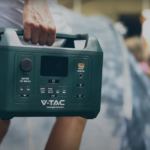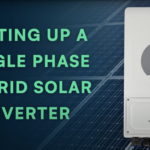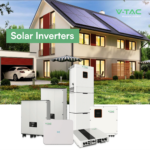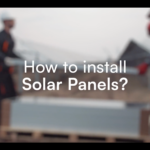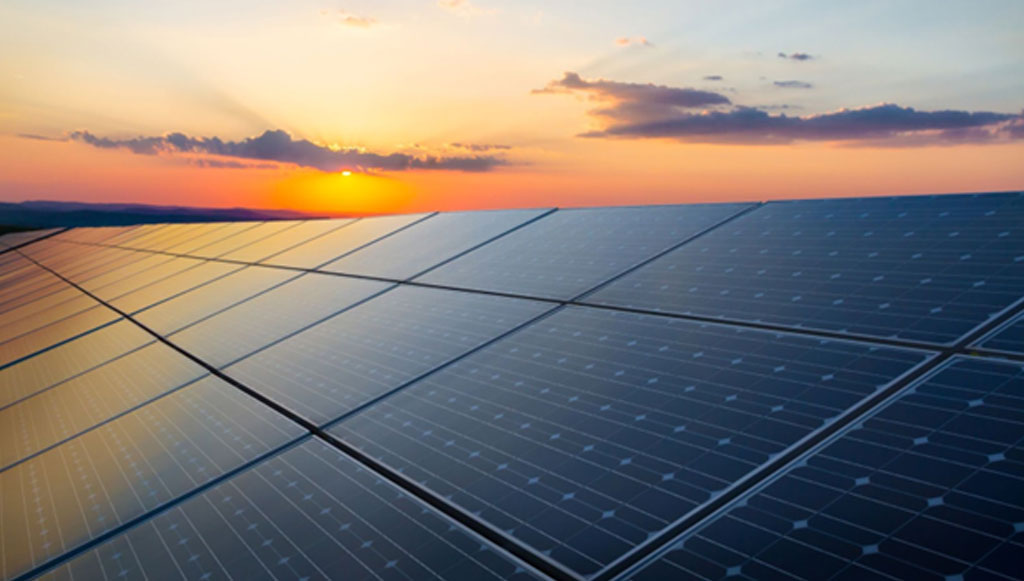
Achieve a successful upgrade to clean energy by taking note of the following helpful information about installing solar panels. Along with the launch of the Energy catalogue, the team at V-TAC lists down reminders before installing photovoltaic panels. Explaining these things to customers before starting any project can help in making the whole installation process seamless and less overwhelming.
Achieve a successful upgrade to clean energy by taking note of the following helpful information about installing solar panels. Along with the launch of the Energy catalogue, the team at V-TAC lists down reminders before installing photovoltaic panels. Explaining these things to customers before starting any project can help in making the whole installation process seamless and less overwhelming.
Steps to follow for solar panels installation:
- Assess Energy Needs: Evaluate your energy requirements by analysing past electricity bills and understanding your future energy consumption patterns. Determine the average daily energy demand in kilowatt-hours (kWh) or megawatt-hours (MWh) to estimate the size of the solar plant.
- Site Evaluation: Conduct a site evaluation to assess the feasibility of installing a solar plant. Consider factors such as available space, shading issues, roof orientation, structural integrity, and local regulations. A professional solar installer or engineer can assist with this evaluation.
- Solar Resource Assessment: Determine the solar resource potential at your site. This involves analyzing solar radiation data, sun path analysis, and shading studies to estimate the amount of sunlight the solar plant can receive. It helps determine the plant’s expected energy output.
- System Sizing: Based on the energy needs and solar resource assessment, determine the size of the solar plant in terms of its capacity (kilowatts or megawatts). This calculation considers factors such as panel efficiency, inverter capacity, and expected energy generation.
- Financial Analysis: Perform a financial analysis to estimate the budget required for the solar plant. Consider factors such as installation costs, equipment costs, operation and maintenance expenses, financing options, available incentives or rebates, and the projected return on investment (ROI). It’s advisable to consult with financial experts or solar professionals for accurate estimations.
- Design and Installation: Once you have selected an installer, they will design the solar plant layout, obtain necessary permits, and carry out the installation. The timeline and cost may vary based on the complexity of the project and local regulations.
- Monitoring and Maintenance: Implement a monitoring system to track the solar plant’s performance and ensure optimal energy generation. Develop a maintenance plan to address routine inspections, cleaning, and any necessary repairs or replacements.
Achieve a successful upgrade to clean energy by taking note of the following helpful information about installing solar panels. Along with the launch of the Energy catalogue, the team at V-TAC lists down reminders before installing photovoltaic panels. Explaining these things to customers before starting any project can help in making the whole installation process seamless and less overwhelming.
Regulations & DNO Applications
One of the many benefits of installing a solar panel system is being eligible to receive Smart Export Guarantee (SEG) payments for selling energy to the grid. This requires a certification from your Distribution Network Operator (DNO). This is to make sure that all installations are compliant with local grid regulations, and that the extra load and strain can be managed safely and effectively.
DNO G98. For small scale systems (16A per phase), an Adequacy of Supply (AoS) test will be done to check if the existing electricity supply is enough for the additional load. Within 28 days of commissioning the solar system, a notification should be submitted to the DNO. If the current supply is not adequate, upgrading your electricity supply is needed.
DNO G99. For larger scale solar systems with (>16A per phase), a DNO approval will be required before any installation can be made. If you are installing Distributed Generation equipment rated at 50kW or higher, you will need to complete a Standard Application Form (SAF).
DNO G100. A G100 application is required if your G99 application comes back and your system’s export needs to be limited.
Types of Solar PV Panels
Different solar panels have different efficiency rates which are based on the quality and the type of cells equipped on the panels themselves.
Thin-Film Solar Panels.
Thin-film solar panels are a type of photovoltaic technology that is made from thin layers of photovoltaic material deposited on a substrate. Their flexibility makes them ideal for curved or irregularly shaped surfaces. This characteristic is useful in the application of solar panels in roofing, where the panels can be easily integrated into the roof design.

Monocrystalline Solar Panels.
Easily recognisable by their uniform black colour and circular cut edges, monocrystalline solar panels are made from single, large silicon crystals and are the most efficient type of solar panel on the market. They can generate more power per square metre compared to other types of solar panels. They are also more durable, have a longer lifespan, and perform well in low light conditions. The new V-TAC Energy catalogue includes a selection of scalable monocrystalline panels for various load requirements.
- Engineered for a positive power tolerance, producing power equal to or greater than their rated power
- PID Resistance makes sure that these solar panels maintain their power efficiency despite high voltages, high temperatures, high humidity, and other potential factors.
- Excellent performance even in low-light environments, attributed to the advanced glass and cell surface textured design
- Through high-quality materials and workmanship, V-TAC Solar Panels come with a 25-year Linear Output Warranty to guarantee that optimal power output will still be achieved even after decades of installation.
Find out more about the V-TAC Solar Panel range here.
